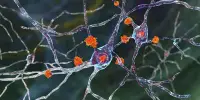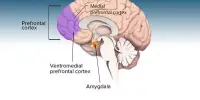New insights into how the brain integrates and processes pain information have been uncovered by a study led by Michael YOO Seng Bum, assistant professor of biomedical engineering at Sungkyunkwan University, and Associate Director WOO Choong-Wan of the Center for Neuroscience Imaging Research (CNIR) within the Institute for Basic Science (IBS). Their work reveals the mechanics underlying the brain’s integration of pain-related information, going beyond simply identifying brain regions that react to pain. They established how the brain integrates pain expectancies with the actual intensity of painful stimuli using functional magnetic resonance imaging (fMRI).
Pain is a multifaceted experience that is impacted by an individual’s expectations as well as the degree of a painful stimuli. For example, one’s perspective of the pain they actually experience might be influenced by the suffering they anticipate feeling. This new study addresses the topic of how these various variables combine to produce a single sensation of pain, although earlier research has delineated which brain regions manage these distinct factors that contribute to our pain experience.
“It’s not just about knowing which parts of the brain are important,” said the study’s first author, KIM Jungwoo. “Ultimately, understanding how pain arises is key to figuring out how to eliminate unnecessary pain.”
It does not just about know which parts of the brain are important. Ultimately, understanding how pain arises is key to figuring out how to eliminate unnecessary pain.
KIM Jungwoo
The researchers used fMRI to observe brain activity in participants exposed to varying levels of pain stimuli, while also manipulating their expectations about the level of pain they would feel. To fully understand how pain is processed in the brain, they separated the process into two stages: preservation (how the brain maintains information about pain expectations and stimulus intensity) and integration (how these elements combine to form a cohesive pain experience). They examined these processes across different levels of the brain’s cortical hierarchy*, expecting lower-level brain networks to preserve information without integrating it, and higher-level networks to preserve and integrate both.
Contrary to the researchers’ initial hypothesis, the results showed that all networks, regardless of level, preserved both types of information — pain expectations and stimulus intensity. However, only higher-level networks were able to integrate this information by simply adding the preserved expectation and stimulus information together. This suggests that while the entire brain stores pain information, only specific areas are responsible for integrating different pain-related signals into the experience of pain.

This study represents a significant collaboration between two fields of neuroscience. Dr. Yoo, an expert in decision-making and electrophysiology, and Dr. Woo, a pain researcher specializing in fMRI, combined their expertise to explore how pain information is processed across the whole brain. Their innovative approach sheds light on the brain’s mechanisms for processing pain, providing valuable insights that could lead to new approaches to treating chronic pain.
Michael YOO Seng Bum, the co-lead “It was a meaningful collaborative study that combined the strengths of each principal investigator to advance beyond merely reporting the activation of specific regions, allowing us to investigate principles of how information is integrated across the brain.”
The research is “an innovative study using geometric information encoded in brain activation patterns to reveal the integration mechanism of distinct types of pain information,” according to WOO Choong-Wan, another co-lead author. She also added that “this discovery would not have been possible without a collaboration.”
* Cortical Hierarchy: The brain processes information in a stepwise manner, with lower-level networks (like the sensory and motor networks) handling basic sensory input, and higher-level networks (such as the limbic system and default mode network) integrating more complex information. This study used this framework to understand how the brain processes and integrates pain information at different levels.
















